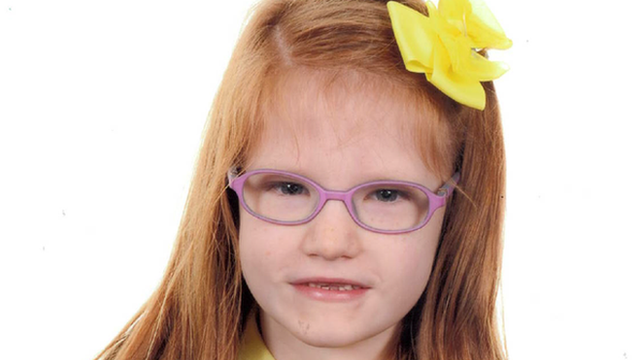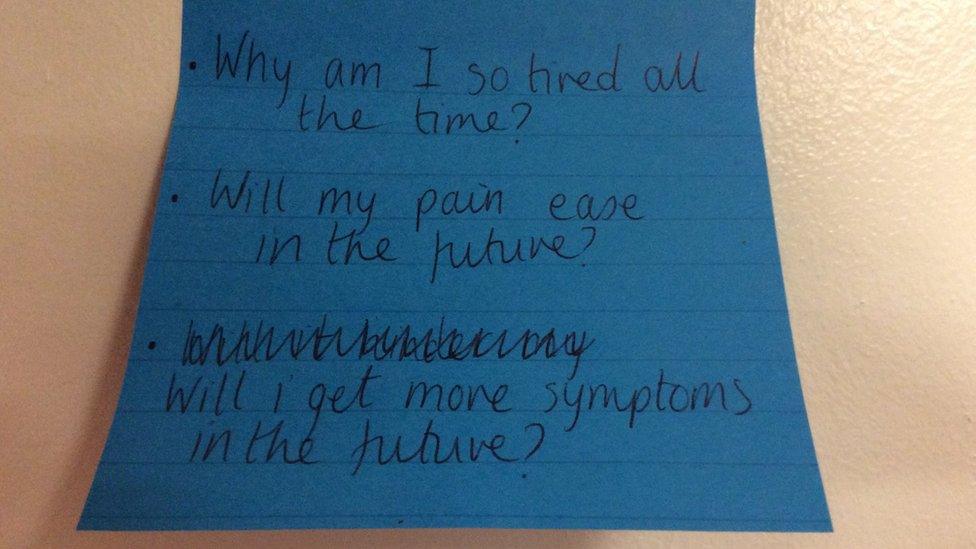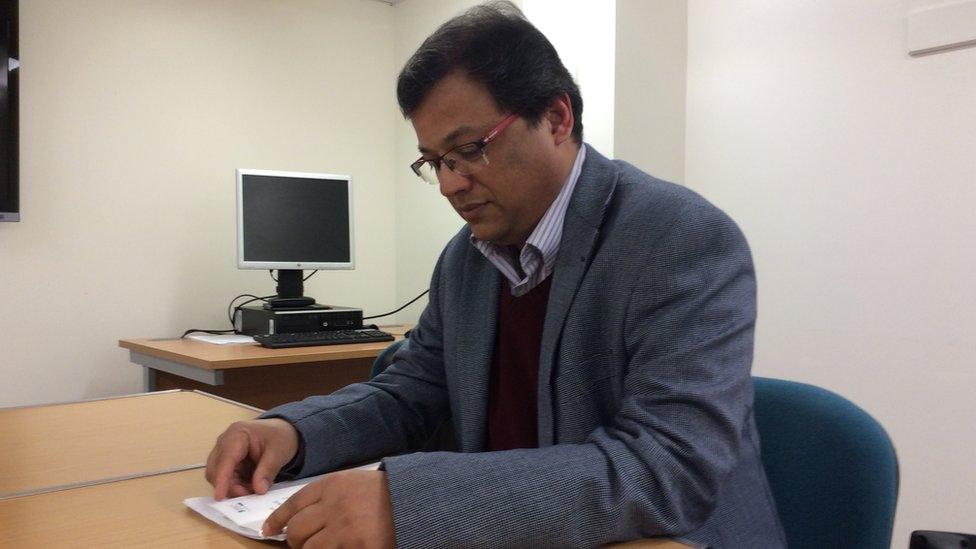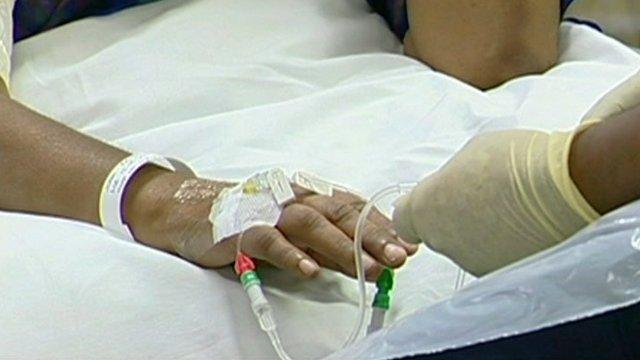'Terrifying and isolating' - living with a rare disease
- Published
"It's terrifying, isolating - you're having these symptoms and you don't know what tomorrow is going to bring or where it will end up."
That is how Carol McCullough describes living with a rare disease and trying to find out what was wrong with her.

Carol McCullough from County Armagh has been diagnosed with Wilson's Disease
A rare disease is defined as one affecting not more than one person in 2,000.
According to the NI Rare Disease Partnership, one in 17 people in Northern Ireland has such a condition.
That is more than 100,000 people, or roughly the population of a city the size of Londonderry.
Carol McCullough, from County Armagh, was diagnosed with Wilson's Disease in 2010.
'Diagnosis a relief'
It is a rare disorder that results in a build-up of copper in the body. An overload of copper is poisonous and can damage the liver, brain and other organs.
If the disease is caught early enough it can be effectively treated - if not, it is fatal.
The 55-year-old says receiving the diagnosis was a relief.
"It has freed up a lot of anxiety about what actually is the cause. I can get support. It's made me more confident to go out with people, has made me much less angry and more settled.
"The name means an awful lot to people because you do need that label to say, 'That's what is happening to me.'"
Someone who agrees that knowledge is power is busy mother-of-four Gillian Cassidy.
Her eldest daughter Lucia was diagnosed with a rare genetic disorder when she was about three and a half years old.
It is called 22q11 deletion syndrome. Children with the condition can have heart defects, learning difficulties, a cleft palate and may have many other medical problems.

Lucia Cassidy, Gillian's daughter
In almost all cases, the symptoms and features result from a missing piece of chromosome. Gillian says she gradually began to notice signs that something was slightly wrong her daughter.
"When she was getting to the age of two we had had a number of different issues. When she should have been learning how to start to talk we realised she had no sounds. She'd always been a quiet baby who didn't cry a lot so I asked the health visitor to refer her on to speech and language."
That referral led to a series of tests and a diagnosis was eventually received.
The Bangor woman says when she first researched the condition online, she was amazed.
"When I typed in 22q11, it brought up all these images of other children from across the world, who looked exactly like my daughter. Like clones from around the world and I didn't even need the diagnosis. I knew."

A note from attendee at rare disease engagement workshop, organised by NI Rare Disease Partnership and the Department of Health
Dr Tabib Dabir is a consultant in clinical genetics.
Nearly a year ago, he was instrumental in setting up an innovative clinic within the Belfast Health Trust which monitors the physical health of sufferers of 22q11 deletion syndrome - with an added mental health component. Gillian Cassidy is also a patient support worker at the clinic.
Dr Dabir says he was responding to the needs of his patients.
"Generally when a diagnosis of 22q11 deletion syndrome is made, patients will be sent for an echo-cardiogram, will be referred to an immunologist, will also have a kidney scan, be referred to a plastic surgeon, etc. All the structural malformations of the condition are regularly looked at - the gap we found was the psychiatric component."
This, says Dr Dabir, is key as teenagers and adults with the syndrome are more likely to develop some psychiatric conditions, including schizophrenia.

Dr Tabib Dabir, consultant in clinical genetics.
"The feedback from the clinic has been very, very encouraging. The parents feel it was much needed and they feel like they can actually contact somebody if there are ongoing issues with their child. The psychiatric component was rarely mentioned - so having a psychiatrist at the clinic is very reassuring."
Further information about rare diseases can be found on the NI Rare Disease Partnership website. , external
The charity, together with the Department of Health, are holding a series of engagement workshops across Northern Ireland - with one being held in Newtownabbey, County Antrim, next week.
Related topics
- Published29 February 2012

- Published3 September 2013
